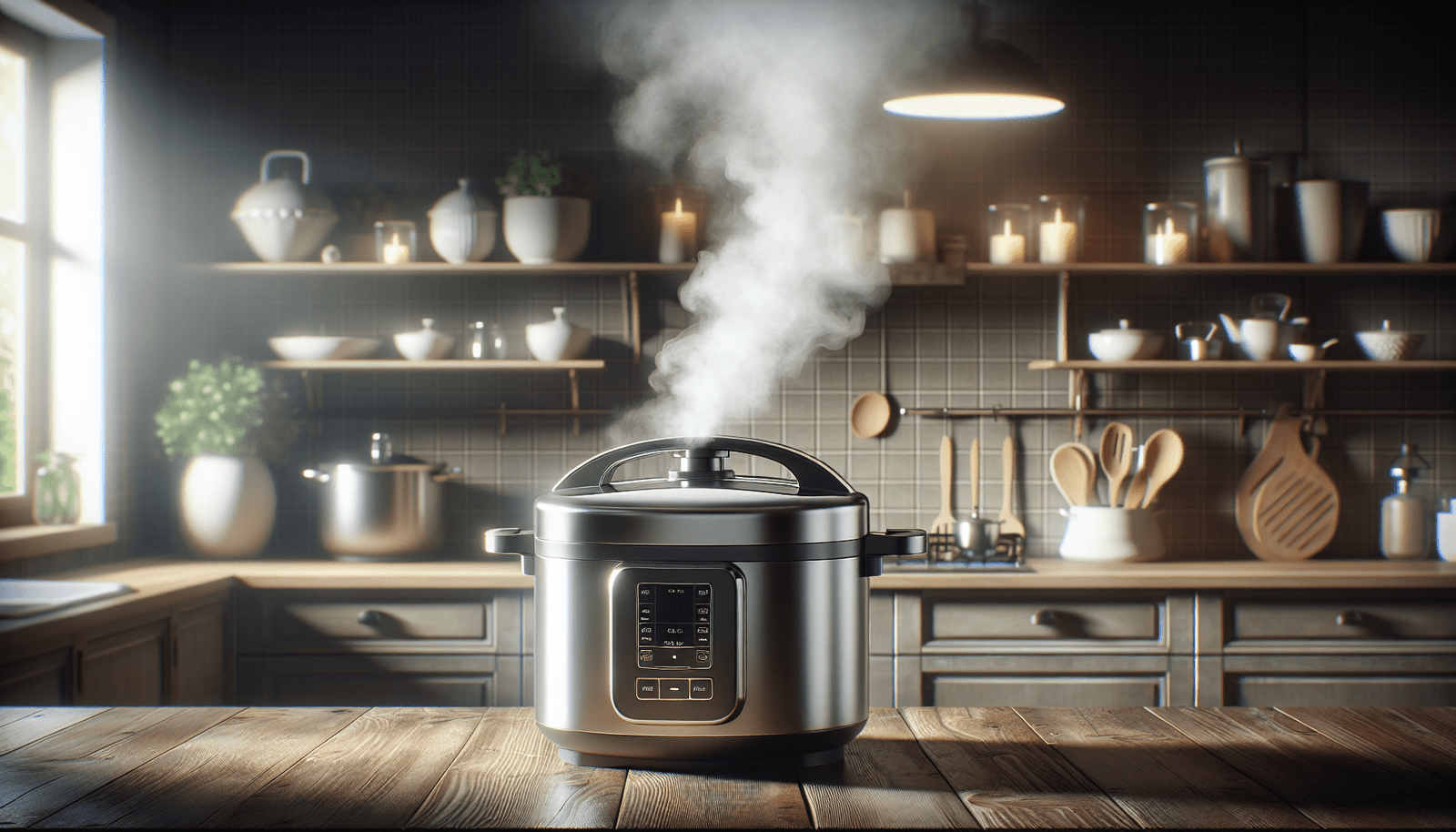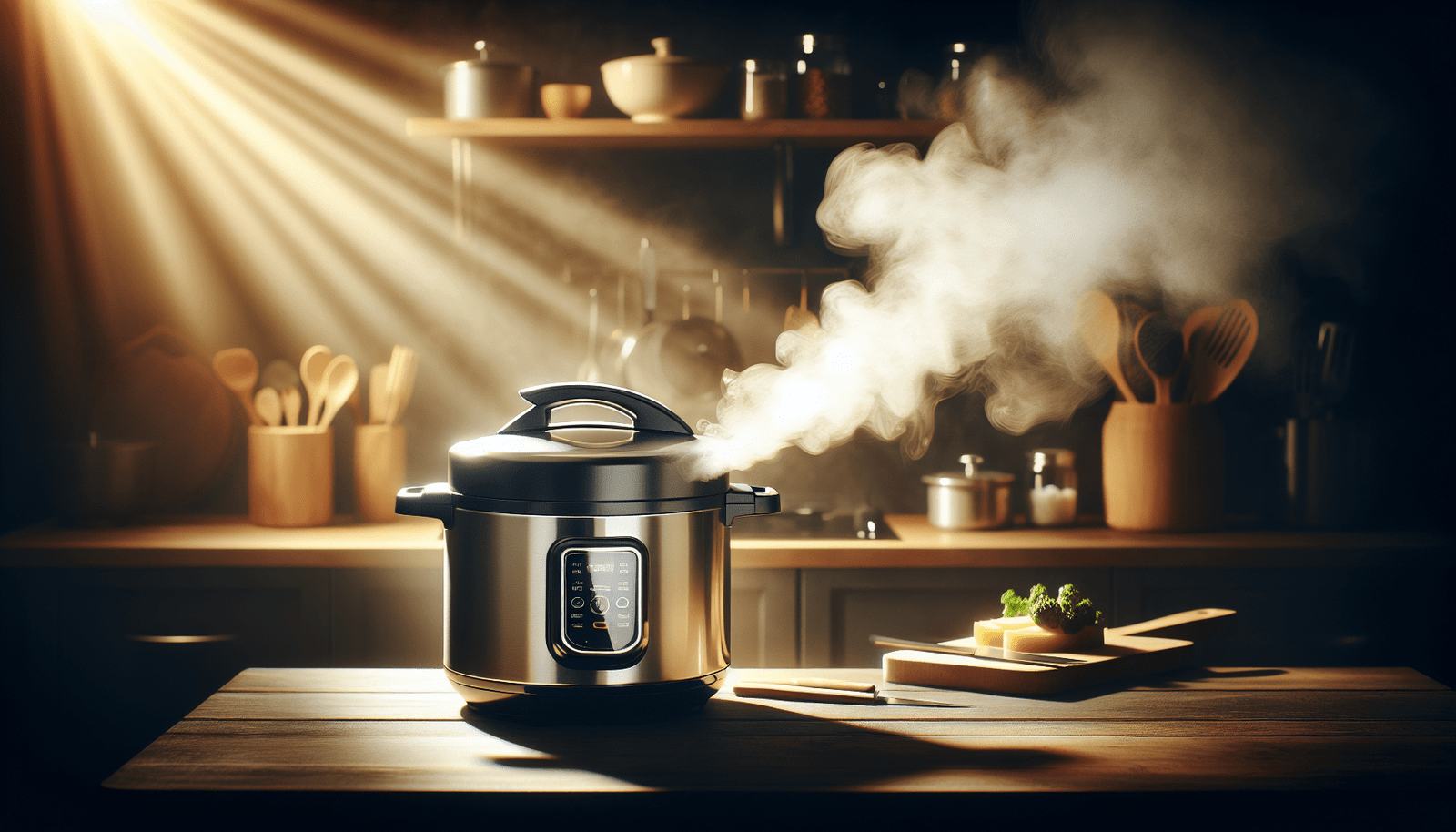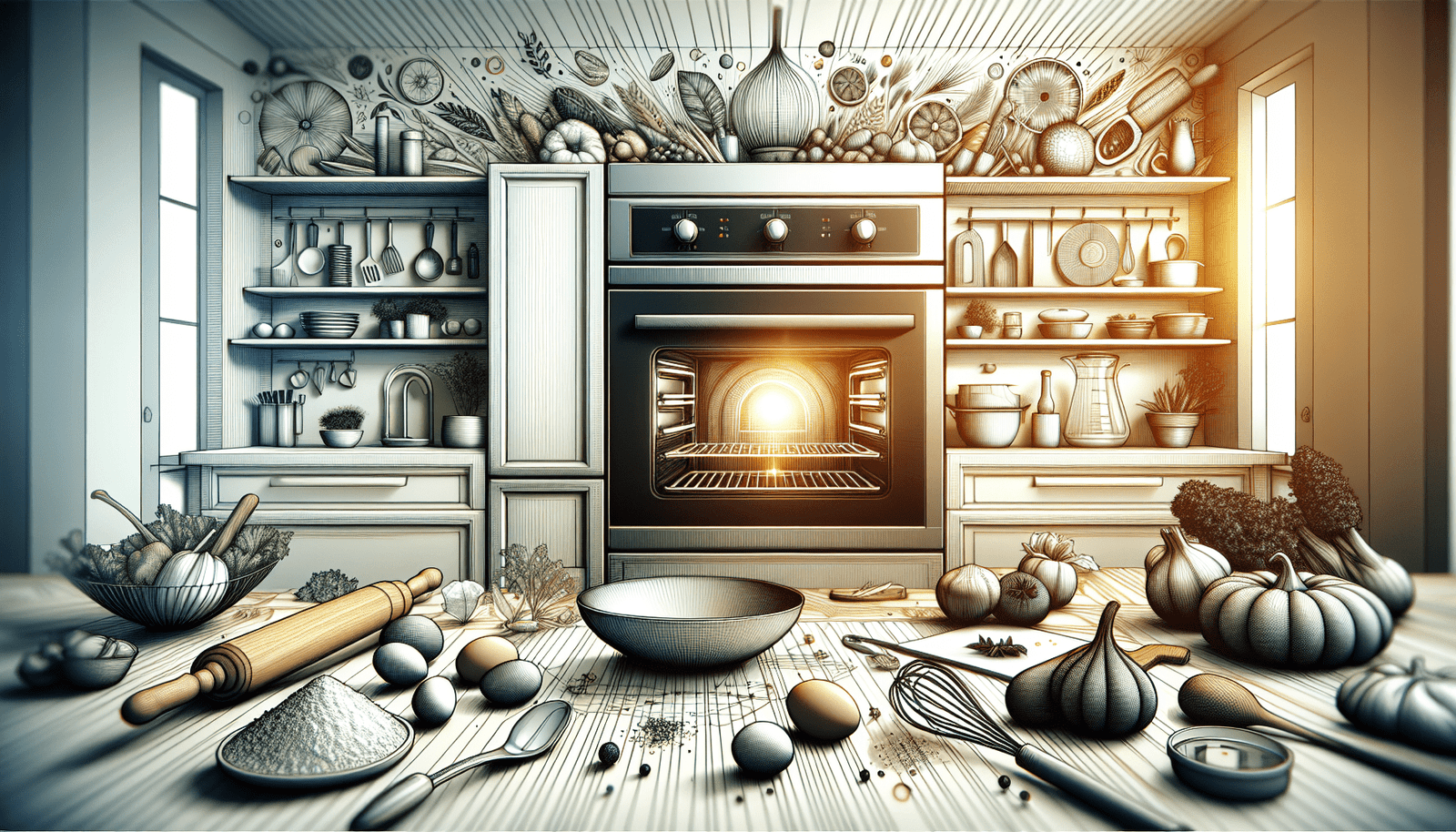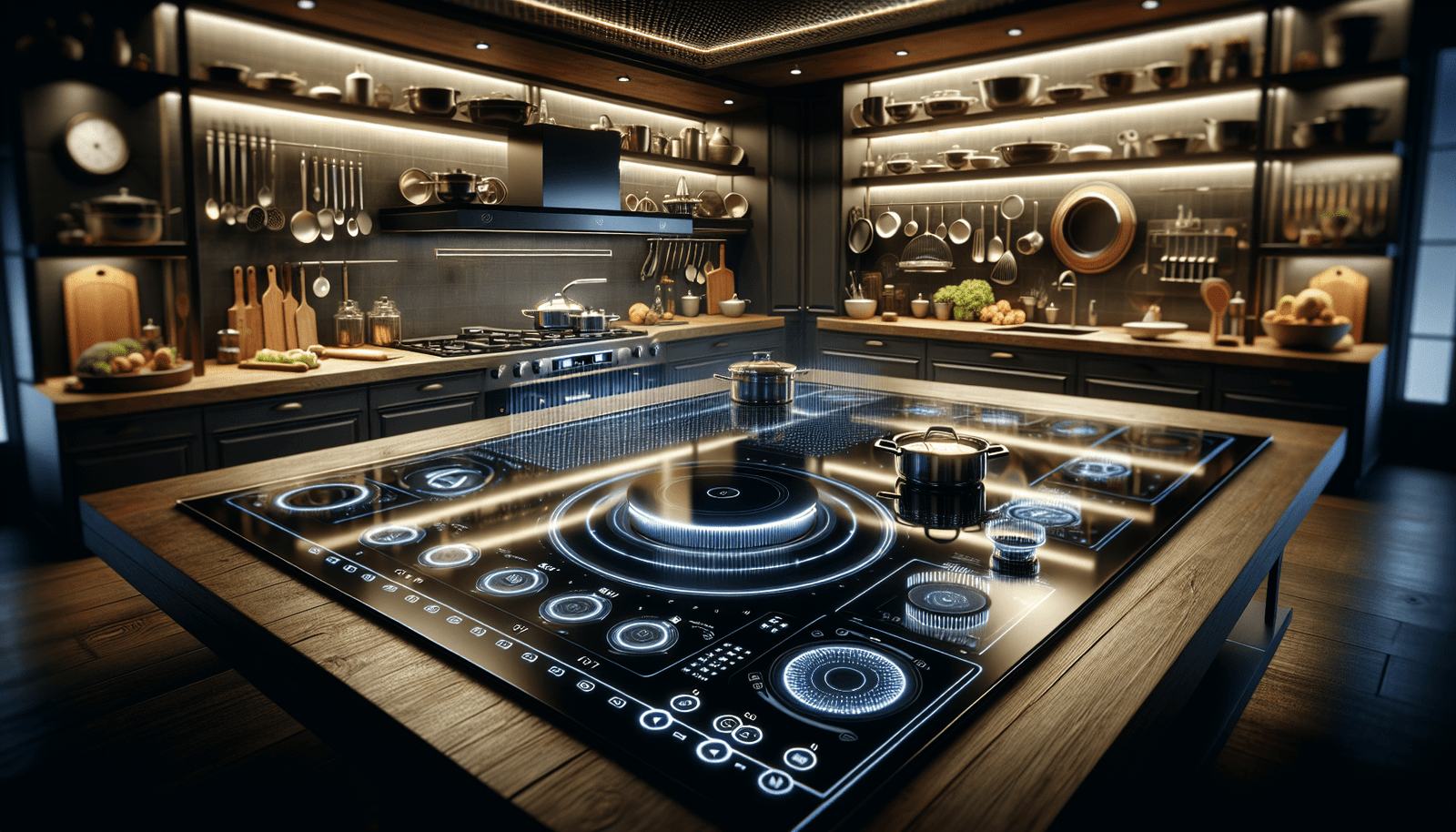Unlock the secrets to culinary mastery with “Pressure Cooker Perfection: Tips and Tricks,” your ultimate guide to navigating the dynamic world of pressure cooking. Whether you’re aiming to enhance your home-cooked meals or elevate the dishes served in a bustling commercial kitchen, this article is tailor-made for you. Discover invaluable insights into the top kitchen cooking appliances, alongside a treasure trove of tips and tricks designed to optimize your use of pressure cookers. Embrace the opportunity to transform your cooking routines by harnessing the power and efficiency of pressure cooking, all while ensuring your kitchen becomes a beacon of creativity and joy.
Understanding Pressure Cookers
The Basic Mechanics behind Pressure Cooking
Imagine you’re in your kitchen, ready to experiment with a magic pot that can cook meals astonishingly fast. That magic pot is a pressure cooker. At its core, the pressure cooker works by sealing steam inside, creating a high-pressure environment that raises the boiling point of water. This allows food to cook at a higher temperature without boiling over, which significantly reduces cooking times and conserves energy. It’s like giving your ingredients a high-speed, high-temperature spa treatment that makes them tender and ready to eat in no time.
Types of Pressure Cookers: Stovetop vs. Electric
Now, you’re standing in front of two types of pressure cookers, unsure which to pick. On one hand, you have the stovetop pressure cooker—a classic design requiring a heat source like a gas or electric range. These pressure cookers offer greater control over pressure and can reach higher pressures and temperatures, cooking food even faster. On the other hand, electric pressure cookers are plug-and-play devices with preset cooking functions, making them incredibly convenient and user-friendly, especially for beginners. Your choice depends on your cooking style and convenience preference.
Evaluating Sizes: Finding the Right Fit for Your Needs
When choosing a pressure cooker, size truly matters. Are you cooking for one or for a bustling family gathering? Pressure cookers range from small 3-quart models—perfect for singles or couples—to hefty 10-quart giants that can handle meal prep for a large family or a party. A 6-quart pressure cooker is often the sweet spot for most households, offering enough capacity for daily cooking without taking up too much kitchen real estate.
Key Features to Look For in a Pressure Cooker
Before bringing a pressure cooker into your life, look for key features that match your needs. A sturdy build quality and safety valves are non-negotiable for safe operation. For versatility, consider models with multiple pressure settings. If you’re leaning towards an electric pressure cooker, look for one with a delay start feature and various cooking programs. A non-stick inner pot is a bonus for easy cleaning, but ensure it’s durable and scratch-resistant.
Getting Started with Your Pressure Cooker
Initial Setup and Safety Check
You’ve just unboxed your new culinary companion! Before you start cooking, perform a safety check. Ensure the lid seals properly, and inspect the pressure valve and gaskets for any defects. These initial steps guarantee that your pressure cooker functions safely and efficiently, setting you up for countless delightful cooking experiences.
Reading and Understanding the Manual
Take the time to read the manual. Each pressure cooker has its quirks and features, and the manual is your treasure map to mastering your device. It explains how to use each function, the cleaning process, and importantly, the safety features. This knowledge empowers you to cook confidently and safely.
The Water Test: A Critical First Step
Before cooking your first meal, perform a water test. Fill your pressure cooker with water to the minimum required level and pressure cook it for a few minutes. This test helps you familiarize yourself with how the pressure cooker works, ensuring it’s functioning correctly and sealing properly. Think of it as the pressure cooker’s maiden voyage, sans any actual food.

Mastering Water Ratios
The Importance of Liquid in Pressure Cooking
Liquid is the lifeblood of pressure cooking. Without sufficient liquid, steam can’t build, and you’ll end up with burnt ingredients rather than a delicious meal. Always ensure there’s enough water, broth, or other cooking liquids to create steam and build pressure inside the cooker.
Finding the Perfect Water Ratio for Different Foods
Different foods absorb and require water differently. Grains like rice and quinoa need enough liquid to become tender, while meats and vegetables might require less. Follow recipes closely for water ratios to ensure perfect results every time, and remember, it’s better to have a bit too much liquid than not enough—you can always reduce the sauce later!
Adjusting Liquid Ratios for Altitude
Cooking at a high altitude? Remember that water boils at lower temperatures in higher elevations, affecting how your pressure cooker performs. You may need to add more water and increase cooking times to compensate for these changes. Consulting altitude-adjustment charts specifically for pressure cooking can help you make the necessary tweaks.
The Key to Perfect Timing
Understanding Cooking Times for Various Foods
Pressure cookers can prepare food incredibly fast, but different ingredients require different timings. While some vegetables might take just a few minutes, tougher cuts of meat could need an hour or more. Getting familiar with the cooking times for various foods ensures everything comes out perfectly tender.
Tips for Adjusting Cooking Times
Becoming adept with your pressure cooker means learning when to add or reduce cooking times. Factors like the size and thickness of the food, the starting temperature (frozen vs. thawed), and the amount of liquid can affect cooking duration. As a rule of thumb, err on the side of caution. You can always cook something a bit longer if needed, but there’s no going back once it’s overcooked.
Using a Cooking Time Chart
A cooking time chart is an invaluable tool in your pressure cooking arsenal. It takes the guesswork out of figuring out how long to cook various ingredients. Keep a chart handy, either from your pressure cooker’s manual or a reputable online source, until you get a feel for the timings.

Maximizing Flavor
Browning: Unlocking Rich Flavors Before Pressure Cooking
For dishes packed with depth and richness, don’t skip the browning process. Searing meats or sautéing onions and garlic before closing the lid adds layers of flavor that mere steaming can’t achieve. Most electric pressure cookers have a sauté function specifically for this purpose.
Layering Ingredients for Maximum Flavor
When loading your pressure cooker, think about how flavors will meld under pressure. Place firm, longer-cooking ingredients at the bottom and more delicate items on top. Adding a bouquet garni or a piece of rind from hard cheese imparts subtle nuances that elevate your dish from good to unforgettable.
Using Herbs and Spices Effectively in a Pressure Cooker
Herbs and spices behave differently under pressure. While dried herbs thrive, fresh ones might lose their vibrant character. Add hardy herbs like rosemary and thyme early in the cooking process, but save delicate ones like basil or cilantro for garnishing. Spices, on the other hand, intensify under pressure, so you might want to start with less than you think you need and adjust to taste after cooking.
Healthy Cooking with a Pressure Cooker
Benefits of Pressure Cooking for Nutrient Retention
One of the fantastic benefits of pressure cooking is its ability to retain nutrients better than other cooking methods. The steamy, sealed environment prevents the dissolution of vitamins and minerals into cooking water, ensuring your meals are not only delicious but packed with goodness.
Choosing Healthy Ingredients
Embrace the power of your pressure cooker to transform healthy ingredients into delectable meals. Lean cuts of meat become tender, whole grains cook to perfection, and legumes soften without pre-soaking. By choosing whole, unprocessed foods, you’re laying the foundation for nutritious eating.
Recipes for a Balanced Diet Using a Pressure Cooker
Diversifying your recipe repertoire is key to a balanced diet, and your pressure cooker is the perfect tool for the job. Experiment with a variety of grains, proteins, and vegetables. From hearty stews to light and brothy soups, the possibilities are endless. Incorporate a rainbow of ingredients to ensure you’re getting a wide range of nutrients.
Efficiency and Time-Saving Techniques
Batch Cooking with a Pressure Cooker
Your pressure cooker is your best friend when it comes to meal prep. Batch cooking is incredibly efficient with this appliance—cook large quantities of basics like grains, beans, or proteins at the start of the week, and enjoy quick assembly of meals on busy days. Remember to store everything properly to maintain freshness.
Using a Pressure Cooker as a One-Pot Solution
Minimize cleanup by utilizing your pressure cooker as a one-pot cooking solution. Many electric models offer functions beyond pressure cooking, such as sautéing, steaming, and even slow cooking. This versatility allows you to create complex dishes with multiple components in a single pot, saving time and effort.
Prepping Ingredients for Quicker Cooking Times
To maximize the time-saving potential of your pressure cooker, prep ingredients in advance. Cut meats and vegetables into uniform sizes to ensure even cooking. Pre-measured spices and seasonings can be kept at the ready to streamline the cooking process when it’s time to start the meal.
Navigating Common Pressure Cooking Challenges
Dealing with Undercooked or Overcooked Meals
Even with careful planning, you might encounter the occasional undercooked or overcooked meal. Don’t despair; it’s usually fixable. If something’s undercooked, simply bring the pressure cooker back up to pressure and cook a bit longer. Overcooked? Salvage what you can and consider turning it into a soup or puree.
Troubleshooting Sealing Issues
If your pressure cooker isn’t sealing properly, steam will escape, and the device won’t reach the necessary pressure. Check the gasket and rim for any food debris or damage. Replacing a worn gasket is a simple fix that restores the seal and ensures your pressure cooker operates efficiently.
Adjusting Recipes for High Altitude Cooking
High altitude affects pressure cooking by reducing the boiling point of water. This means you’ll need to increase cooking times to compensate. Start with a 5% increase in cooking time for every 1,000 feet above 2,000 feet in elevation. Experiment and adjust as needed to find the perfect balance for your location.
Maintenance and Care
Regular Cleaning for Longevity
Proper cleaning is essential for the longevity of your pressure cooker. After each use, clean the pot, lid, and rubber gasket thoroughly to prevent buildup of food particles. Check the pressure valve and steam vent as well, using a brush or pin to remove any residue that could impede performance.
Storing Your Pressure Cooker Properly
Store your pressure cooker in a dry, cool place with the lid inverted on the pot. This prevents any odors from forming and keeps the gasket from becoming misshapen. If space allows, leave the lid off entirely to air out the interior and keep it fresh for your next cooking adventure.
When to Replace Seals and Parts
Keep an eye on the condition of your pressure cooker’s seals and parts. Over time, seals may become brittle and parts like the pressure valve might show signs of wear. Replacing these components as needed maintains the efficiency and safety of your appliance, ensuring many more years of pressure cooking delight.
Incorporating Pressure Cooking into Everyday Life
Planning Weekly Meals with a Pressure Cooker
Leveraging your pressure cooker for weekly meal planning is a game-changer. Spend some time each week mapping out meals, accounting for leftovers that can be repurposed into new dishes. The speed and versatility of your pressure cooker make it easy to maintain a varied and nutritious menu without spending all day in the kitchen.
Adapting Family Favorites to Pressure Cooking
Don’t hesitate to experiment with adapting your family’s favorite recipes for the pressure cooker. Many traditional dishes that typically take hours can be prepared in a fraction of the time. Start with recipes that naturally lend themselves to moist cooking methods, like stews and braises, and adjust from there.
The Role of Pressure Cooking in Meal Prepping
The efficiency of the pressure cooker makes it an ideal tool for meal prepping. Cook large batches of ingredients or entire meals ahead of time, then portion and freeze for future use. This approach not only saves time during busy weeks but also ensures you always have healthy, homemade options at the ready.
Embracing your pressure cooker opens up a world of culinary possibilities. From tender meats and flavorful stews to grains cooked to perfection, this versatile appliance can transform the way you cook. With a bit of practice and these tips and tricks, you’ll be ready to explore all the delicious, nutritious, and time-saving meals your pressure cooker can produce. Happy cooking!


